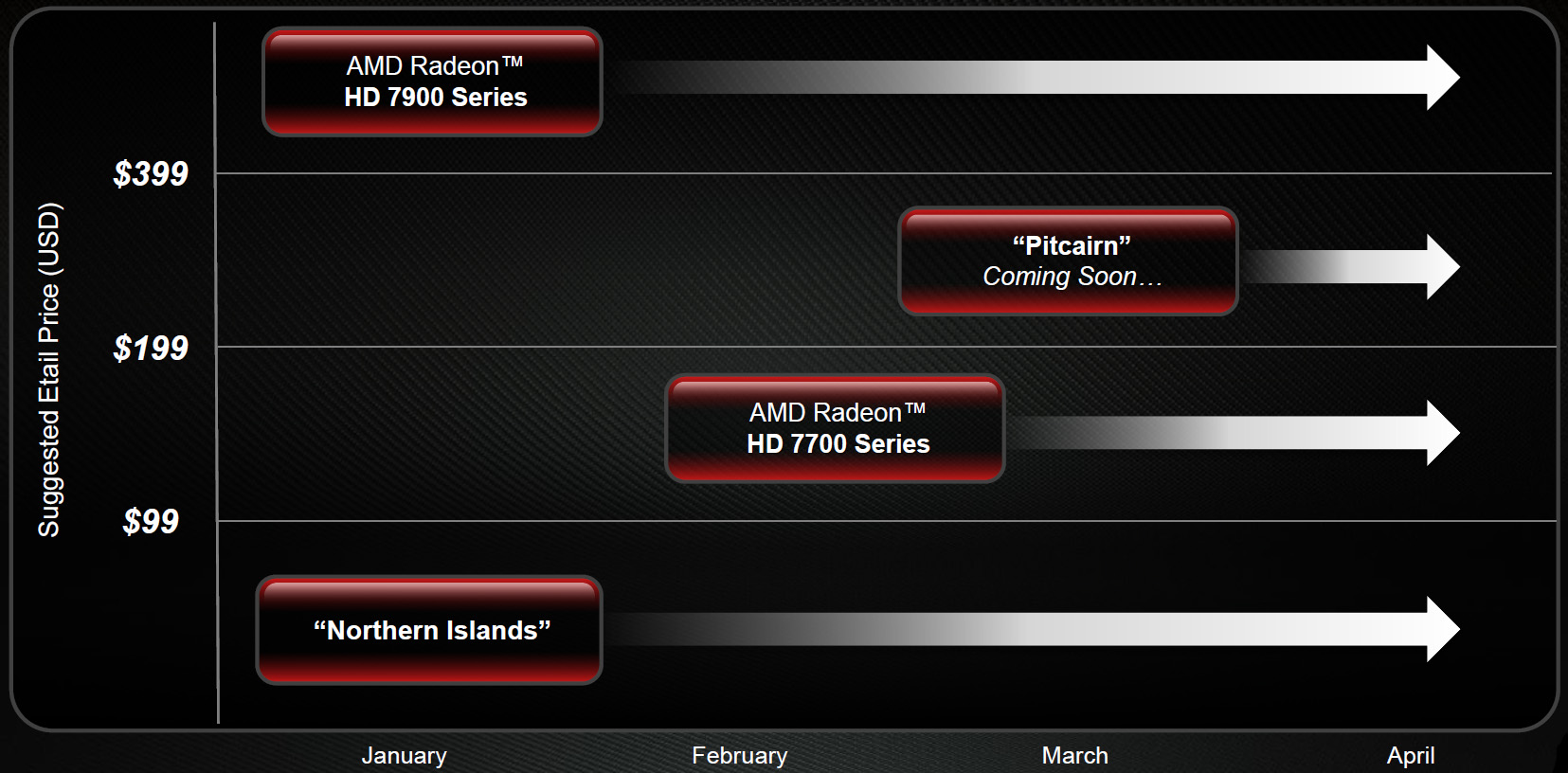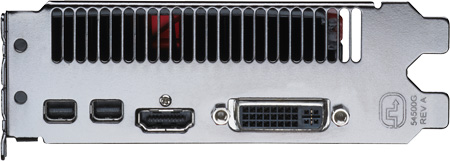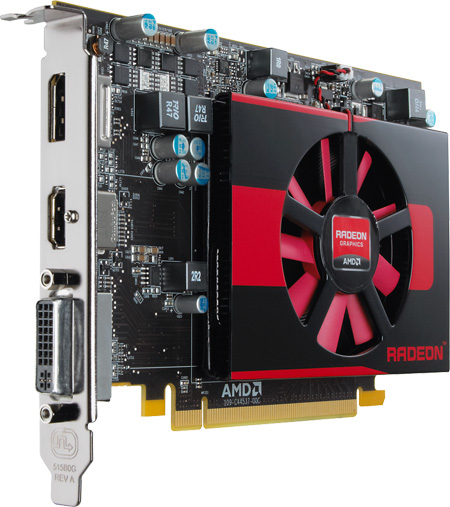AMD Radeon HD 7770 And 7750 Review: Familiar Speed, Less Power
These are the lowest-end cards built using AMD's new Graphics Core Next architecture. Is 28 nm manufacturing, a fresh design, and new functionality enough to warrant upgrading existing value-oriented champs like the Radeon HD 6850 and GeForce GTX 460?
Meet Radeon HD 7770 And 7750
If you’re a regular Tom’s Hardware reader, then you’re already familiar with our monthly Best Graphics Cards for the Money column, written by Don Woligroski. Basically, Don maintains a list of the most value-oriented deals at a number of price points to help game enthusiasts make purchasing decisions. Once upon a time, the list was absolutely dominated by hardware from Nvidia. Slowly, though, I’ve watched it shift the other direction. And each month, as I’m editing the column, I grill Don on his selections in order to make sure the right recommendations make it in.
Well, for February, there were 18 total cards in his list, split between full endorsements and less enthusiastic honorable mentions. Fourteen of those were AMD cards. Four came from Nvidia. Under $200, every single card was a Radeon. Every. Single. One.
Right now, AMD is simply rocking the budget gaming space with cards like the Radeon HD 6770 and 6850. But with a new generation of derivatives following behind the Radeon HD 7970 and 7950, it’s hoping to trump existing recommendations with the Graphics Core Next architecture, along with a handful of value-adds.
To be sure, its fiercest competition doesn’t come from Nvidia. Rather, the company must do battle with its own compelling portfolio of fast, affordable gaming cards.
High-End? Check. Low-End? Check
After covering enthusiasts with those aforementioned 7900-series cards based on its Tahiti GPU, AMD is addressing the entry-level space with Radeon HD 7770 and 7750. Both boards sport the same Cape Verde graphics processor, manufactured using TSMC’s 28 nm node, in slightly different configurations.
Compared to Tahiti, a 4.31 billion-transistor, 365 square millimeter die, Cape Verde sports 1.5 billion transistors in a 123 square millimeter package. Its most complete configuration consists of 10 Compute Units, each one composed of four Vector Units containing 16 Stream Processors. All told, that’s as many as 640 shaders based on the Graphics Core Next architecture.
Get Tom's Hardware's best news and in-depth reviews, straight to your inbox.
Cape Verde is equipped with four ROP partitions—half as many as Tahiti—limiting it to 16 raster operations per clock cycle. A memory crossbar connects those partitions to a pair of 64-bit dual-channel memory controllers, yielding a 128-bit aggregate bus.
Clearly, AMD took an interesting path to get from the Radeon HD 7970’s Tahiti to the 7770’s Cape Verde. Armed with 31% of the flagship GPU’s shaders and texture units, 50% of its ROP partitions, 66% of its L2 cache, and a mere 27% of its peak memory bandwidth, company representatives say they ran simulations and these were the ratios that turned back optimal performance. The target, they claim, is playable 1920x1080 performance. So, while frame rates may fall off at higher resolutions with AA turned up, that’s perfectly acceptable for a fairly mid-range card. Just don’t expect to do much multi-monitor gaming.
The gaping hole between AMD’s highest- and lowest-end Radeon HD 7000s won’t persist for long. Right in the middle, where the Radeon HD 6870 and 6900s currently live, you’ll soon see a third distinct GPU called Pitcairn. Back on topic, though…
Radeon HD 7770 And 7750
Officially, the top-end Cape Verde part is called Radeon HD 7770 GHz Edition, paying homage to its 1 GHz core clock. This is a milestone, AMD says, meaning every partner board will bear the moniker, regardless of whether it’s a stock reference board or a faster configuration with aftermarket cooling. Of course, we all know that the core’s operating frequency is only one variable in the complex equation that defines a board’s performance, so that name ends up rubbing as self-congratulatory and, ultimately, superfluous.
The Radeon HD 7770’s 1 GHz Cape Verde GPU employs all 640 available shaders, theoretically yielding 1.28 TFLOPS of compute performance. Since each Compute Unit includes four texture units, 7770 also sports 40 texture units. An unmolested back-end turns up four ROP partitions and a 128-bit memory bus populated by 1 GB of GDDR5 memory at 1125 MHz.
Measuring 8.5” long, this dual-slot card’s dimensions are almost identical to the Radeon HD 5770 we test it against. Whereas that older Juniper-based board uses a centrifugal fan to exhaust heat, the 7770 employs an axial fan mounted on an aluminum extruded heat sink. We’re normally not advocates of designs that recirculate hot air. However, an 80 W typical board power rating is conservative enough that other subsystems in a closed chassis shouldn’t be affected.
That 80 W rating exceeds the PCI Express bus’ 75 W limit, so the Radeon HD 7770 does require one six-pin auxiliary power connector. Even still, the 5770 was rated at 108 W—almost 30 W higher. Even more impressive, AMD’s Radeon HD 7770 benefits from the company’s suite of ZeroCore technologies, which purportedly take power use under 3 W during long idle periods.
Although one full slot on the 7770’s I/O panel is devoted to ventilation, you’ll still find one dual-link DVI port, one full-sized HDMI connector, and two mini-DisplayPort outputs back there, cumulatively supporting up to six screens (though practically, the limit is still four, since we still haven’t seen any DisplayPort 1.2 Multi-Stream Transport hubs).
| Header Cell - Column 0 | Radeon HD 7770 | Radeon HD 7750 | Radeon HD 6850 | Radeon HD 5770 |
|---|---|---|---|---|
| Stream processors | 640 | 512 | 960 | 800 |
| Texture Units | 40 | 32 | 48 | 40 |
| ROPs | 16 | 16 | 32 | 16 |
| Graphics Clock | 1000 MHz | 800 MHz | 775 MHz | 850 MHz |
| Texture Fillrate | 40 Gtex/s | 25.6 Gtex/s | 37.2 Gtex/s | 49.4 Gtex/s |
| Memory Clock | 1125 MHz | 1125 MHz | 1000 MHz | 1200 MHz |
| Memory Bus | 128-bit | 128-bit | 256-bit | 128-bit |
| Memory Bandwidth | 72 GB/s | 72 GB/s | 128 GB/s | 76.8 GB/s |
| Graphics RAM | 1 GB GDDR5 | 1 GB GDDR5 | 1 GB GDDR5 | 1 GB GDDR5 |
| Die Size | 123 mm2 | 123 mm2 | 255 mm2 | 166 mm2 |
| Transistors (Billion) | 1.5 | 1.5 | 1.7 | 1.04 |
| Process Technology | 28 nm | 28 nm | 40 nm | 40 nm |
| Power Connectors | 1 x 6-pin | None | 1 x 6-pin | 1 x 6-pin |
| Maximum Power | 80 W | 55 W | 127 W | 108 W |
| PCI Express | 3.0 | 3.0 | 2.0 | 2.0 |
| Price | $160 | $110 | ~$150 (Street) | ~$105 (Street) |
The Radeon HD 7750 is a drastically different graphics card, even though the same piece of silicon serves as its foundation. A 55 W power rating means that it doesn’t need an auxiliary connector at all—just a 16-lane PCI Express slot. And a 6.5” PCB is short enough to fit in space-constrained environments like diminutive desktops and HTPCs. We haven’t seen a serious graphics card with single-slot cooling for a while, but this board manages challenging feat, too.
Of course, there are necessary compromises. Two of Cape Verde’s CUs are disabled, leaving 512 functional shaders and 32 texture units. Also, core clock rate drops to 800 MHz, reducing peak compute performance to 819 GFLOPS. AMD does leave the back-end alone. One gigabyte of GDDR5 running at 1125 MHz on a 128-bit bus feeds four ROP partitions.
AMD says the 7750 also supports six screens, though with one dual-link DVI port, one full-sized HDMI connector, and one full-sized DisplayPort connector, your options for getting there are more limited.
Current page: Meet Radeon HD 7770 And 7750
Next Page Overclocking With XFX’s R7770 Black Edition Overclocked





